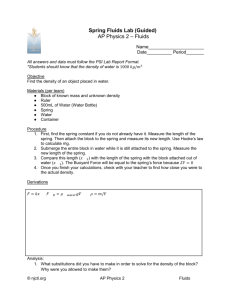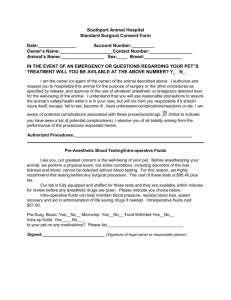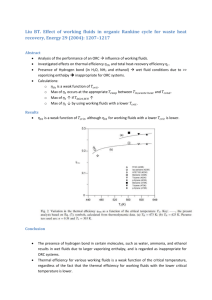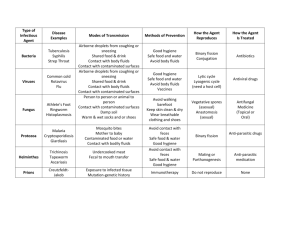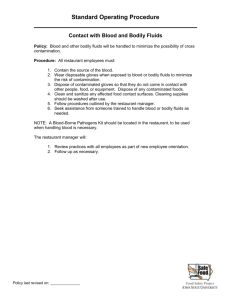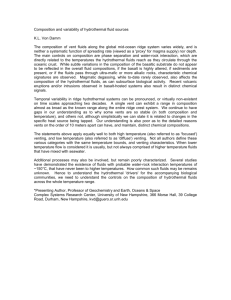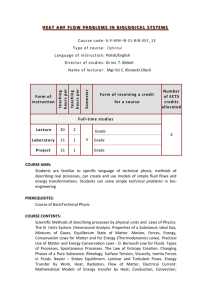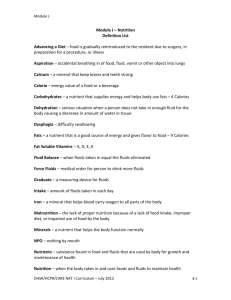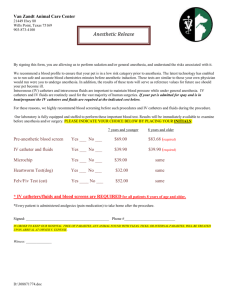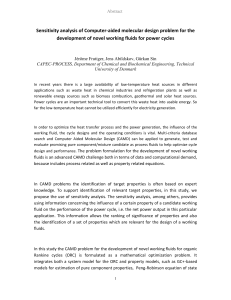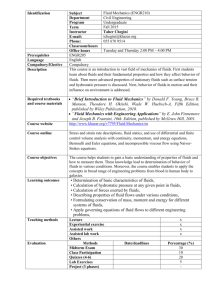FOM 1113 BLOOD AND BODY FLUIDS5 Weeks
advertisement
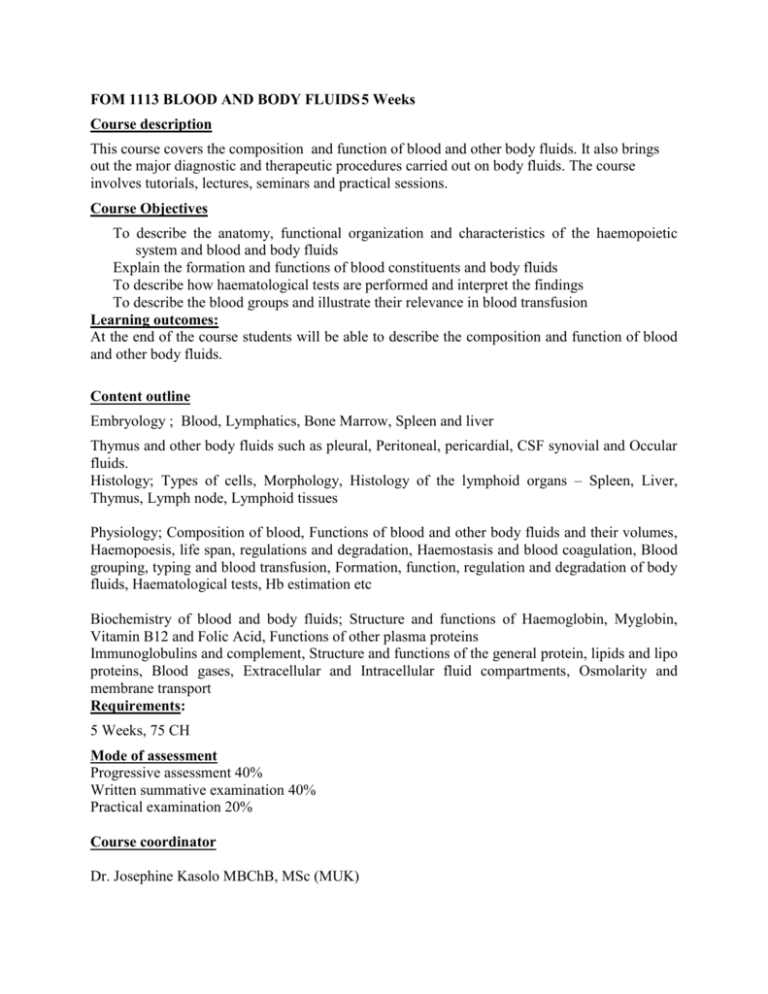
FOM 1113 BLOOD AND BODY FLUIDS 5 Weeks Course description This course covers the composition and function of blood and other body fluids. It also brings out the major diagnostic and therapeutic procedures carried out on body fluids. The course involves tutorials, lectures, seminars and practical sessions. Course Objectives To describe the anatomy, functional organization and characteristics of the haemopoietic system and blood and body fluids Explain the formation and functions of blood constituents and body fluids To describe how haematological tests are performed and interpret the findings To describe the blood groups and illustrate their relevance in blood transfusion Learning outcomes: At the end of the course students will be able to describe the composition and function of blood and other body fluids. Content outline Embryology ; Blood, Lymphatics, Bone Marrow, Spleen and liver Thymus and other body fluids such as pleural, Peritoneal, pericardial, CSF synovial and Occular fluids. Histology; Types of cells, Morphology, Histology of the lymphoid organs – Spleen, Liver, Thymus, Lymph node, Lymphoid tissues Physiology; Composition of blood, Functions of blood and other body fluids and their volumes, Haemopoesis, life span, regulations and degradation, Haemostasis and blood coagulation, Blood grouping, typing and blood transfusion, Formation, function, regulation and degradation of body fluids, Haematological tests, Hb estimation etc Biochemistry of blood and body fluids; Structure and functions of Haemoglobin, Myglobin, Vitamin B12 and Folic Acid, Functions of other plasma proteins Immunoglobulins and complement, Structure and functions of the general protein, lipids and lipo proteins, Blood gases, Extracellular and Intracellular fluid compartments, Osmolarity and membrane transport Requirements: 5 Weeks, 75 CH Mode of assessment Progressive assessment 40% Written summative examination 40% Practical examination 20% Course coordinator Dr. Josephine Kasolo MBChB, MSc (MUK) Reading materials 1.Color atlas of histology/Philadelphia: Lippincott Williams & Wilkins , 2000 2. Wheater's functional histology: a text and color atlas/New York : Churchill Livingstone , 2000 3. Harper's biochemistry/New York: McGraw-hill , 2000 4. Textbook of biochemistry with clinical correlations /New York: Wiley-Liss , 1997. 5. Cell structure & function : an integrated approach /Philadelphia, Saunders College, 1991 6. Handbook of cell and organ culture /Minneapolis : Burgess Pub. Co., 1964 BBS1112 Introduction to Bioinformatics 2 weeks Course description This course covers the application of modern information system to molecular biology and biomedical science.. The course involves tutorials, lectures, seminars and practical sessions. Course Objectives To describe the principles of bioinformatics. Explain the applications of bioinfromatics. Learning outcomes: At the end of the course students will be able to apply computer based information systems to molecular biology and other biomedical sciences. Content outline Bioinformatics definition and scope Applications of bioinformatics Introduction to molecular biology Requirements: 2 Weeks, 30 CH Mode of assessment Progressive assessment 40% Written summative examination 40% Practical examination 20% Course coordinator Dr. Kateete BVM, MSc Reading Materials 1. Electronic networking in Africa : advancing science and technology communication networks in Africa /Washington : American Association for the Advancement of Science, c1992, 1993 2. Peter Norton's introduction to computers /New York : Glencoe McGraw-Hill , 1996 3. Dictionary of information technology /New Delhi : Universal Book Stall, rep.1994 4. Management skills for the information manager /Aldershot, England : Gower, 1993 5. Language from nine to five : developing business communication skills /New Jersey : Prentice- Hall , 1985
